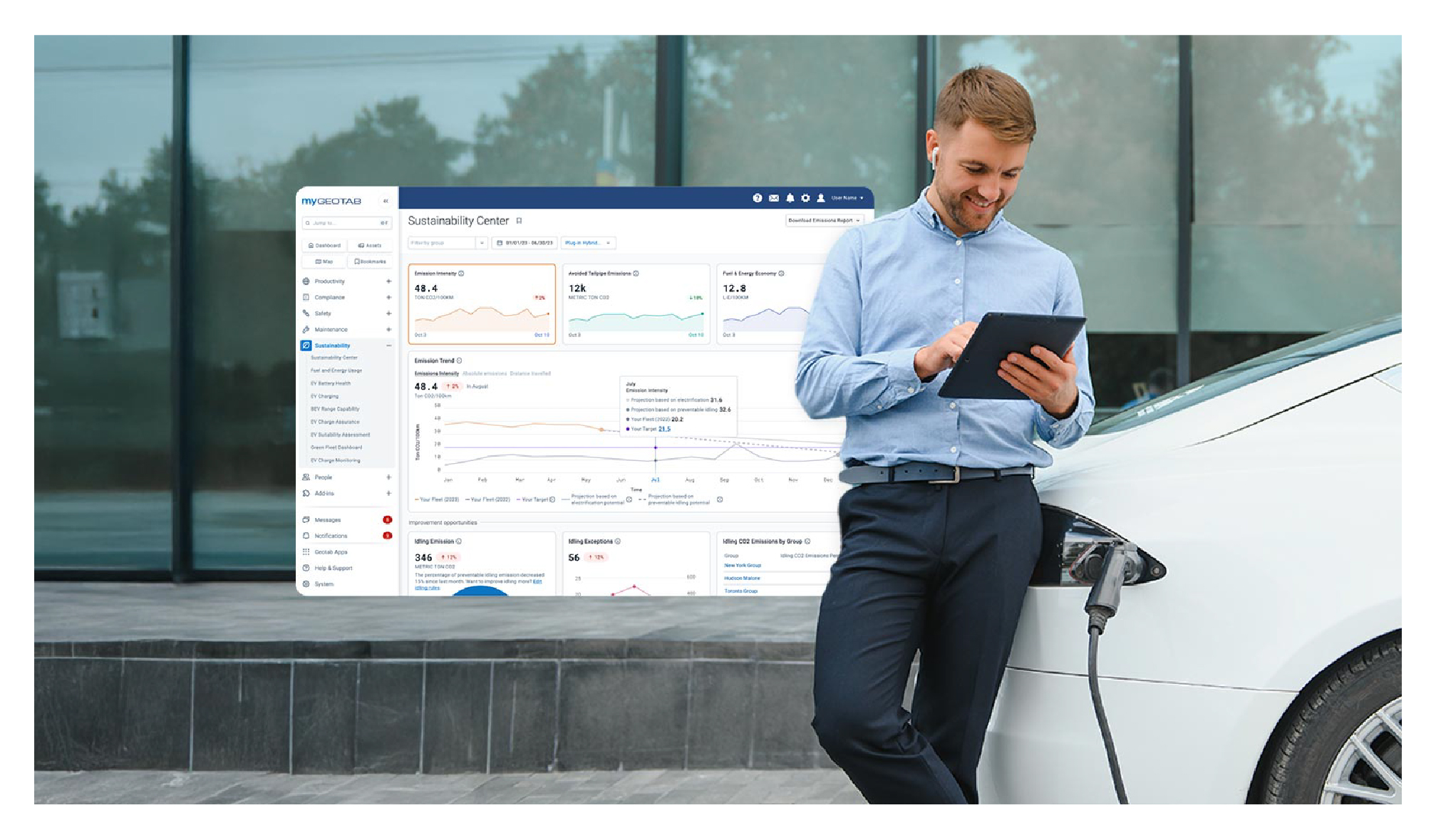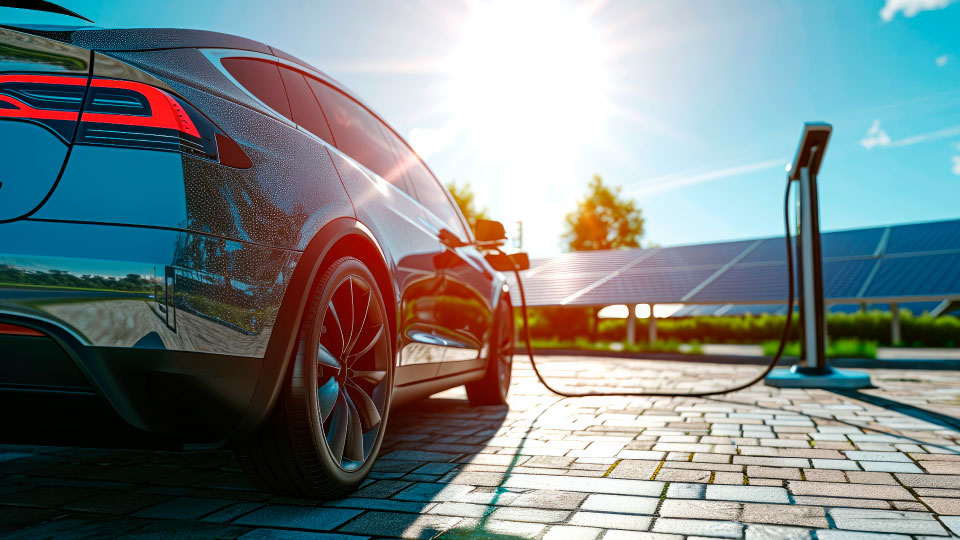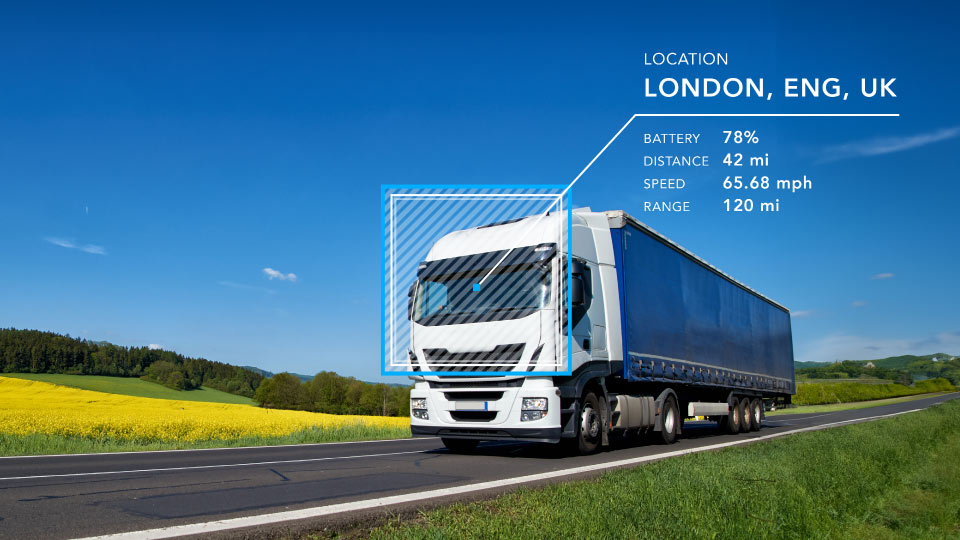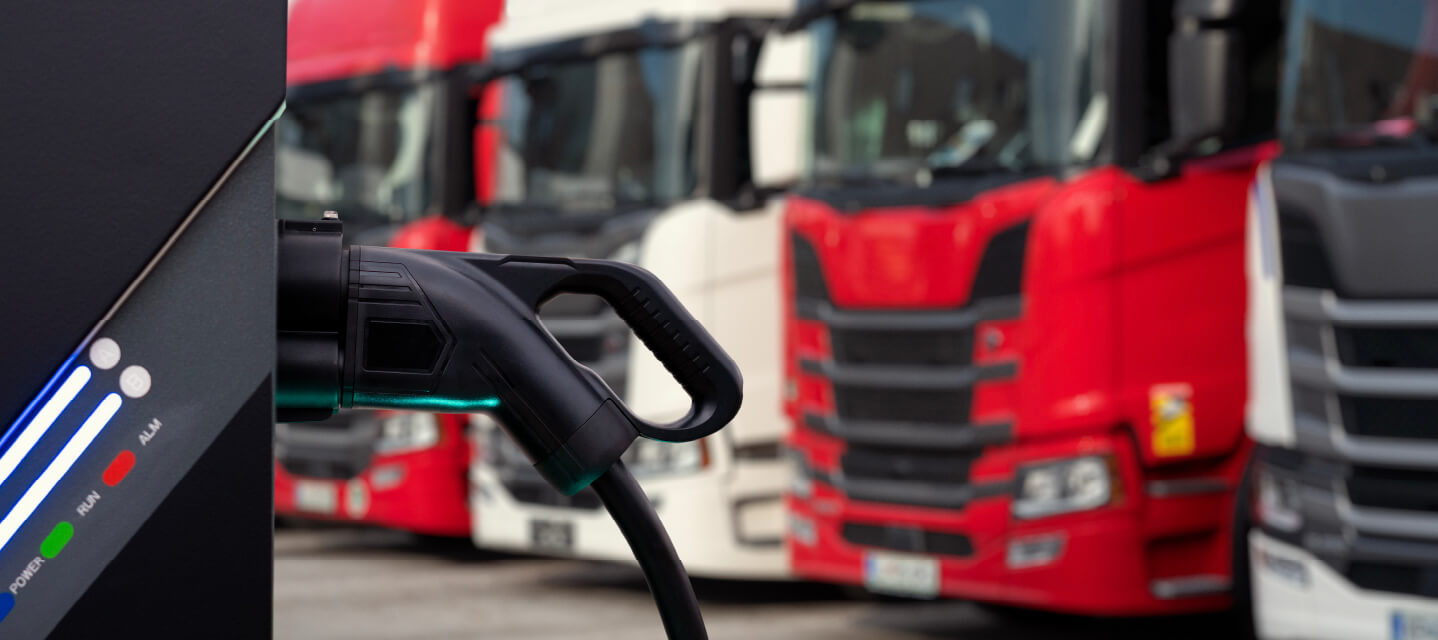Electric vehicle adoption in the UK: Why make the transition?
Explore the advantages and barriers of making the transition to electric vehicles!
By Geotab Team
Aug 16, 2019
Updated: Jan 4, 2023

Electric vehicle adoption in the UK is a work-in-progress, the century-old internal combustion engine (ICE) remains champion. Why is this? Well, while electric vehicles (EVs) offer significant environmental and operational benefits, changing customer attitudes is much more of a challenge. But, If there is one takeaway from this article, it’s to consider an EV as your next vehicle, and hopefully, I will help explain why?
Clean air zones driving EVs
The UK’s Road to Zero Strategy sets out the framework for all new vehicle sales by 2040 to be zero-emission. Transport emissions are a serious issue that requires mitigation. London was the first major UK city to act, introducing an Ultra Low Emission Zone (ULEZ). The zones standards prohibit any petrol euro 4, and diesel euro 6 from entering the zone, failure to comply results in a £12.50 (up to 3.5 tonnes), and £100 for larger vehicles, such as lorries, coaches and buses (over 3.5 tonnes). Other cities have already committed to introducing their own schemes, with many others in consultation. Therefore, switching to EVs is likely to become more of a requirement than a choice.
EV barriers: the pains and strains
Currently, several barriers exist that hinder the adoption of EVs. Cost and range anxiety remains the most prominent barriers to entry.
Upfront cost — the initial cost of EVs are higher than its internal combustion engine (ICE) counterpart; this is the result of the battery making up around a third of the total cost. On a positive note, the cost of battery cells is declining at a rapid rate, over 80 percent in the last ten years, meaning overtime EVs will become more competitive. However, taking into account the total cost of ownership, EVs provide an advantage in the long term with reduced fuel and maintenance costs.
Range anxiety — When EVs are unable to meet the daily mileage demands without recharging, this is considered range anxiety. From a commercial perspective, this is critical because charging is time, productivity, and loss of potential revenue. With that said, urban fleets generally travel between 100 and 150 miles a day, where EV models are readily available. However, understanding the how, when, and where to charge will provide additional clarity to fleets aiming to electrify.
See also: They’re EVerywhere: how to find your best fit in the EV market
Incentive to adoption
Due to the relatively high upfront costs for EVs, incentives have been put in place to help mitigate the cost over the short term. Currently, the UK government provides:
Vehicle Type: Car
Amount: £3,500, or up 35% of the purchase price
Details: Eligible vehicles can travel at least 70 miles without any emissions
Vehicle Type:Van
Amount: £8,000, or up 20% of the purchase price
Details: Eligible vehicles can travel at least 10 miles without any emissions
Vehicle Type: Truck
Amount: For the first 200 orders the grant will pay for 20% of the purchase price for these vehicles, up to a maximum of £20,000. The grant will then pay for 20% of the purchase price for these vehicles, up to a maximum of £8,000
Details: Eligible vehicles have CO2 emissions of at least 50% less than the equivalent conventional Euro VI vehicle that can carry the same capacity. They can travel at least 10 miles without any emissions
Vehicle Type: Taxi
Amount: £7,500, or up 20% of the purchase price
Details: Eligible vehicles can travel at least 70 miles without any emissions at all
Financial incentives are one of the keys to improving EV adoption. The number of EVs (from plug-in hybrid to battery-electric) on the UK roads today is almost 220,000, a modest 2.5 percent. Interestingly, the sale of battery-electric vehicles has increased by 70 percent in the previous year, which is an encouraging sign.
However, in order to make further progress, more than just financial incentives will be required. Strengthening the EV charging infrastructure, greater vehicle choice, assurances on reliability, and improving customer confidence will all have a role to play.
What about fleets?
Last year, Geotab surveyed 250 prominent fleet managers and found that:
- 9 out of 10 managers believe EVs will play a dominant role over the next decade.
- 88% anticipate additional government regulation to support the deployment of EV fleets.
Therefore, EVs are firmly on the radar of fleet managers.
In London, over one-third of the public bus fleet is an EV (hybrid and battery-electric). Similarly, under the new system, all new black cabs registered have to be zero-emission capable. In transport and logistics, UPS is leading the way in converting its diesel fleet to electric. Farmdrop, a food delivery service operates a fully-electric fleet to serve its customers. EVs are a game-changer, as they significantly contribute to reducing the levels of pollution in our cities and urban areas. Similarly, are made-ready to comply with any incoming ultra-low emission zone regulation.
Outlook
In short, there is a considerable appetite for EV technology. Price and time to fuel is a barrier. However, the costs of production will continue to improve, creating a more competitive landscape. EV fuel and maintenance costs carry a significant advantage over its ICE counterpart. Ultimately, government regulation is pointing in one direction to improve air quality in cities. The tightening of air quality standards and the roll-out of low emission zones, means fleets have to make a decision. Incur the cost or make the transition to EVs.
Subscribe to the Geotab Blog
The Geotab Team write about company news.
Table of contents
Subscribe to the Geotab Blog
Related posts

Geotab’s new fleet Sustainability Center simplifies fuel and emissions reduction
June 13, 2025
3 minute read
.jpg)
Lead with Trust: How Geotab Helps Businesses Navigate CSRD Compliance
March 19, 2025
2 minute read

2030 or 2035, the UK Needs Meaningful Action on EVs Now
September 6, 2024
2 minute read

Driving smarter: Insights from Geotab’s “Taking Charge” Report
August 8, 2024
2 minute read

The art of the possible: Insights from Geotab’s “Taking Charge” Report
June 20, 2024
3 minute read

